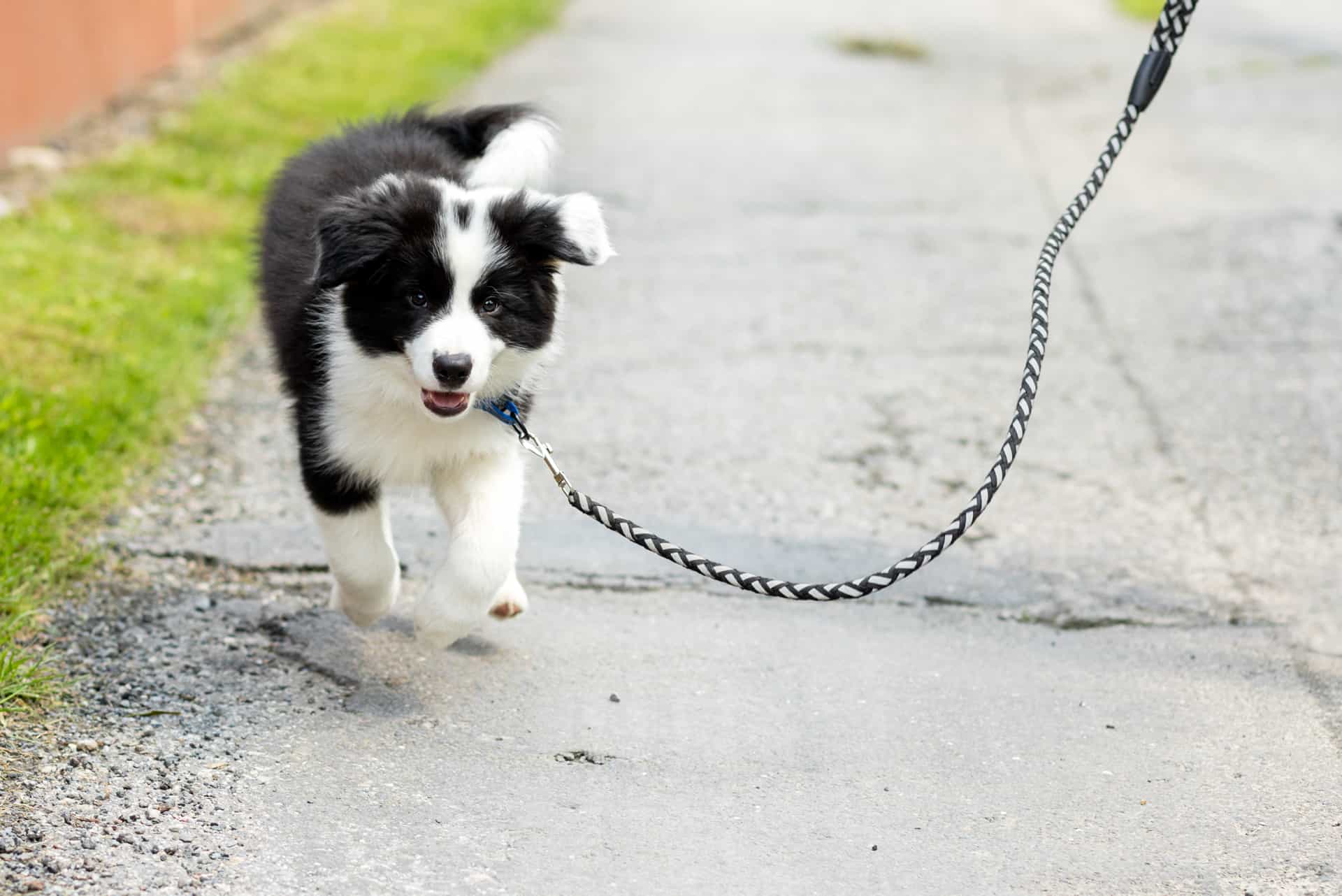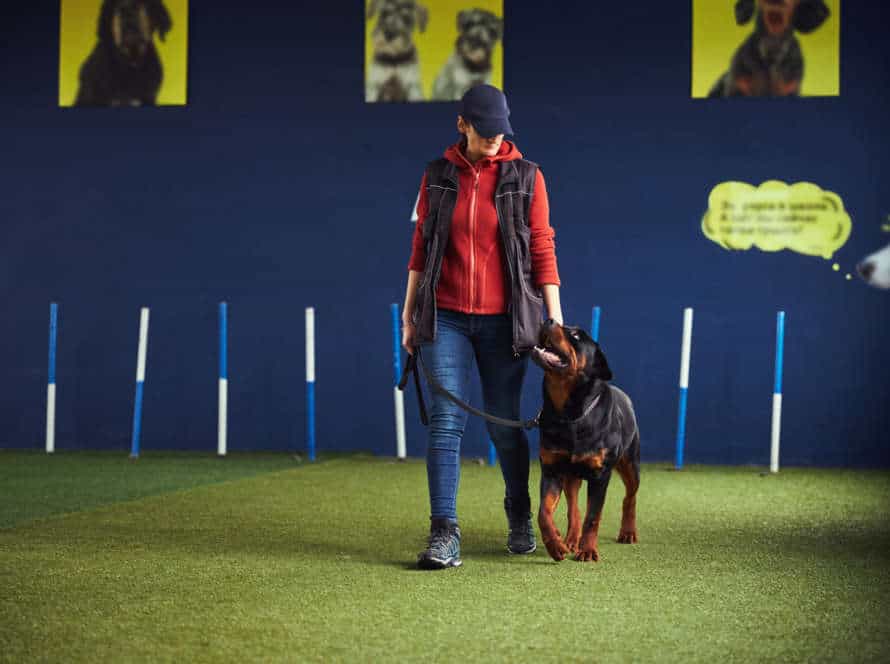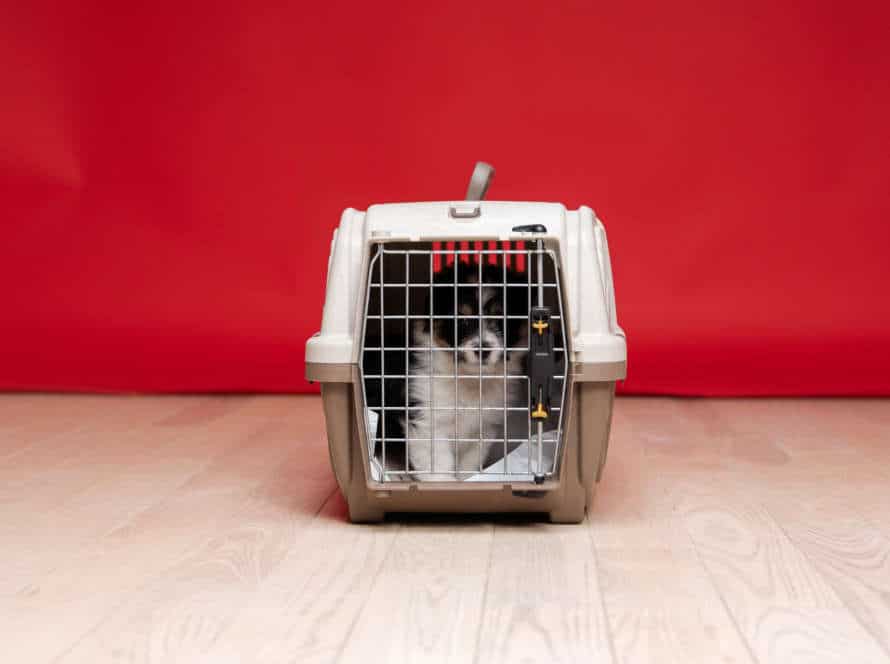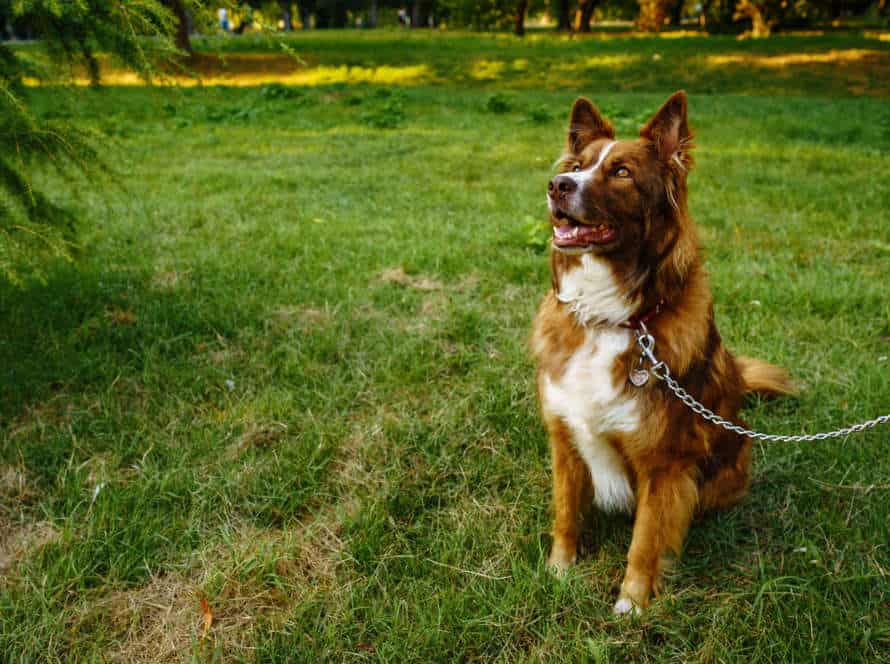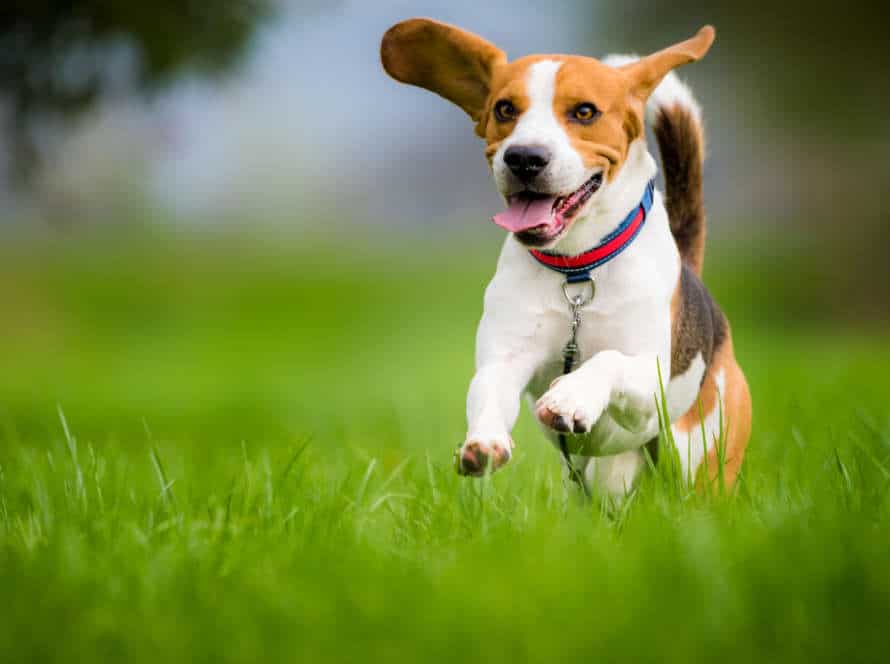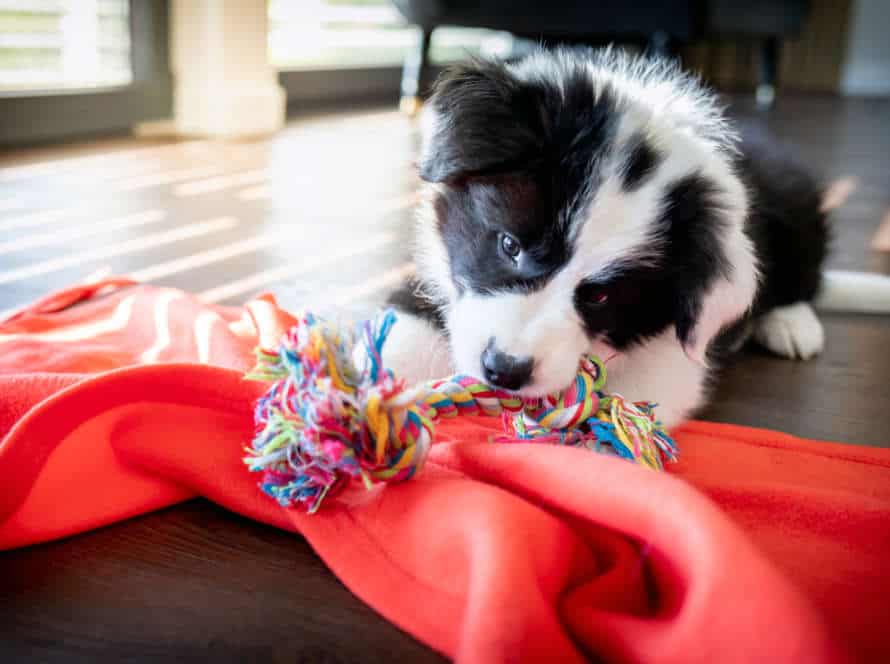The Importance of Consistency in Addressing Leash Biting Issues
Staying consistent is key to solving leash-biting issues in dogs. Biting is bad for the dog and can be dangerous for both it and its owner. Inconsistent training leads to confusion and encourages bad behavior. Here’s how to be consistent when addressing these issues:
- Set clear rules: Decide what’s acceptable and what’s not when it comes to leash-biting.
- Practice: Use the same training methods every day for best results.
- Reward good behavior: Rewarding good behavior helps to reinforce it and discourage bad behavior.
- Everyone gets involved: Everyone in the household should follow the same rules, or it could confuse the dog.
Remember, consistent reinforcement of positive behavior is the key to solving leash-biting issues in dogs.
Understanding Leash Biting
Leash biting is a common problem for dog owners. To handle it effectively, we need to understand why it occurs and how to respond correctly. This article will explain the basics of leash biting.
It is crucial to be consistent in our response. We’ll also learn how to make a successful plan for dealing with the issue.
What is Leash Biting?
Leash biting is a common behavior in dogs. It makes walking difficult for pet owners. To have a good relationship with your dog, you need to understand it and know how to address it.
Why do dogs do it?
- Boredom or anxiety: as a distraction or self-soothing.
- Playful or dominant: grabbing and tugging the leash.
- Hunger or curiosity: smells food or an interesting scent.
It’s important to be consistent. Set clear boundaries. Redirect attention to positive behaviors using treats or toys. If the behavior persists, get professional help – it may be a health issue.
Why do dogs bite their leash?
Dogs may bite their leash for various reasons, such as boredom, anxiety, or wanting to play. If your pup is a leash biter, you must take action to stop it.
Why consistency is key:
Consistency is so important when training a dog not to bite the leash. It reinforces good behavior and makes clear what’s expected of them. Inconsistent messages can confuse your pup and impede progress.
Enforcing leash rules and behaviors also helps avoid future problems, like running away or aggression during walks. With patience and correct training, you can put an end to leash biting and make walks more enjoyable for both you and your pup.
How does leash biting affect the dog?
Leash biting can be bad for your pup. It can also be dangerous to your pup and those around him.
When your pup bites the leash, it could mean he is feeling anxious, agitated, or frustrated. This behavior can get worse and lead to more aggression, like biting and lunging at other dogs and humans.
It’s important to address leash biting consistently and firmly so it doesn’t get worse. Your pup needs to learn that it’s not okay to bite the leash – and that there are consequences.
You can help your pup stop leash biting by offering treats, praise, and toys when he behaves well on the leash. With patience, persistence, and consistency, you can help your pup have stress-free walks.
Addressing Leash Biting
Leash biting is an issue many dog owners must tackle. But, there’s hope! A few strategies exist to help reduce or stop it. Consistency is key for success. Repetition reinforces the desired behavior and makes a lasting impact. Here’s how to handle leash biting and why staying consistent is important.
Training Techniques to Stop Leash Biting
Leash biting can be really annoying. But there are ways to fix it! Consistency is a must. Here’s what you can do:
- Teach the “Leave It” Command. Use treats and commands to make your pup stop biting the leash.
- Use a Leash with a Specific Taste. Spray something on the leash that will encourage them not to bite.
- Distractions. Keep their attention on something else while walking.
- Consistent Training. Don’t use the same leash twice, so they don’t associate it with biting.
By using these methods consistently, your pup will learn not to bite the leash and your walks can be peaceful.
Pro Tip: If your dog is a chronic leash biter, a muzzle can be helpful while training.
Positive Reinforcement for Behavioral Changes
Positive reinforcement is a great way to change your dog’s behavior, particularly when dealing with leash biting. Consistency is key! Here’s how to use it for leash biting training:
- Identify the behavior you want to encourage – no leash biting.
- Reward your pup with treats, praise, or toys when they stop.
- Be consistent – reward them every time they show the desired behavior.
- Redirect your dog if they start biting the leash. Give a different command and reward them for following it.
Remember, positive reinforcement works best if you’re consistent in your training and rewards. Be patient and stick with it – you’ll see positive changes in your dog’s behavior over time.
Consistency in Training: Why it’s Important
Consistent training is a must to get the results wanted. To stop leash biting, consistency is the answer. Here’s why consistency matters:
- Dogs love routine and repetition. Being consistent with clear rules and limits helps them understand what is expected.
- Inconsistency in training can confuse your dog and give them mixed signals. It will be more difficult for them to learn and be obedient.
- When it comes to leash biting, it is important to be consistent. If you sometimes let your dog bite the leash and other times don’t, they won’t understand the consequences.
- Consistent training will help your dog know what is expected of them. This leads to a better relationship between pet and owner.
Consistency in Addressing Leash Biting
Leash biting is a common problem among many dogs. To tackle this, consistency is key. Through consistent training and reinforcement, the dog will eventually stop the behavior and form better habits. This article will explain why consistency is essential when addressing leash biting and how to approach it.
Implementing a Consistent Training Schedule
Consistency is key for managing leash-biting in dogs. A regular training schedule helps them understand what is expected of them. Here are steps to build this schedule:
- Set a regular training time. Plan several short training sessions throughout the week.
- Use positive reinforcement techniques like treats and praise to reward good behavior and discourage leash-biting.
- Be patient and firm, and respond the same way to leash-biting.
- Focus on distracting your dog with other activities when it tries to bite the leash.
Consistent training reinforces good behavior. This leads to less leash-biting and a happier, better-behaved dog.
Sticking to the Same Training Techniques
Stick to the same training techs and you could be hindering your efforts to stop leash biting in your pup. Consistency is key, but also try different methods to see what works for your dog.
- Positive reinforcement when good behavior is shown and no leash-biting occurs.
- Teach an alternative action, like carry a toy in the mouth.
- Spray bottle to stop leash-biting.
- Use a head collar or front-clip harness for more control.
Inconsistent responses to leash biting can confuse your pup. Experiment with different training and be consistent for best results for your dog’s needs.
The Importance of Consistency in Reinforcement
Consistency is essential in teaching your dog good behavior. Especially when it comes to leash biting.
Having consistent techniques such as redirecting attention with a toy, verbal commands and rewarding your pup for good behavior helps them understand what is expected of them.
On the other hand, being inconsistent – like allowing leash biting some days – can make it harder for your pup to learn and can prolong training.
It is also beneficial to avoid activities that trigger leash biting, like running or roughhousing.
Consequences of Inconsistency in Training
Inconsistent pet training can bring on undesirable habits like leash biting. Dogs don’t know what they can and can’t do if you’re not consistent with disciplining them. This can lead to them acting on their natural instincts, such as leash biting.
Let’s figure out how to tackle this behaviour and ensure steady training for your pet.
Reinforcing Bad Behaviors
Consistency is a must when dealing with leash biting. Reinforcing wrong behavior will cause major issues. Dogs like patterns and need clear instructions from their owners. To stop leash biting, set clear boundaries and be consistent in commands. Inconsistent training will confuse the pup, which can lead to more biting.
Be firm in corrections and patient with your pet. With consistency, your dog can learn how to behave on the leash and make walks enjoyable for everyone.
Confusing the Dog
Inconsistent training can have bad effects on your dog’s behavior, especially when dealing with leash biting. Confusing your pup through inconsistent training can give them mixed messages and make it hard for them to know what you want.
Be consistent with your approach instead; use the same methods, commands, and rewards during every session. Understand your dog’s temperament and adjust your training to suit their learning style.
By staying consistent, you can teach your pup how to walk without biting, making your time together more enjoyable and strengthening your bond. Consistency in training can be very helpful for other issues too.
Pro Tip: Encourage good behaviour with rewards and show your pup lots of love when they do things correctly.
Delay in Behavioral Changes
For successful addressing of leash biting issues in dogs, consistency in training is key! When training isn’t consistent, such as changing methods or commands, or not being persistent, the pup can become confused, leading to regression in learning. This can cause a delay in behavioural changes and the pup may keep exhibiting leash biting. If the issue is addressed too late, the pup may have difficulty unlearning the habit and you won’t see any major changes in behaviour. Thus, it’s vital to begin training your pooch consistently from the start to handle any behavioural issues promptly.
Pro Tip: Stay persistent and consistent in training to avert confusion and speed up the pup’s behavioural changes.
The Benefits of Consistency in Addressing Leash Biting
Leash biting can be a real pain for dog owners and their canine pals. But don’t worry! There are some ways to tackle this problem if you stay consistent. Consistency is the key to successful training and getting your pup to trust you, plus it helps both of you understand each other better. To make this happen, reinforce the behavior you want consistently and make sure to communicate your expectations clearly.
Quicker Behavioral Changes
Consistency is essential to tackle leash biting issues in dogs. It leads to quick behavioral changes. Here are the advantages of having consistency:
- Clear Communication: Consistent responses show your pooch that their behavior isn’t ok.
- Training Reinforcement: Consistent training strengthens good behavior and stops bad behavior. It also builds trust and leadership between you and your pet.
- Quick Behavioral Changes: Repeating consistent reactions to leash biting behavior helps your dog learn what’s appropriate and not, leading to speedy changes.
- Patience and Persistence: Consistency needs patience and perseverance, but in the end, it will be worth it. You’ll have an obedient and well-trained dog.
So, next time you face leash biting issues, remember that consistency is key.
Improved Relationship between Dog and Owner
Consistency is key when tackling leash biting issues. Frustration can come from this behavior, but it may worsen. Here are the advantages of consistency in this area:
- Build Trust: Reliability and trustworthiness will be demonstrated with consistent training. This can help strengthen the relationship between you and your pet.
- Clear Communication: Consistent training will create a clearer message between you and your pup. Rules will be established, and your pup will understand what is expected.
- Reduce Stress: Consistent training can decrease stress for your furry friend, which will lead to a calmer and more content pet.
Always reward good behavior and stay firm with training to get the best results.
Reduced Stress for the Dog and Owner.
If you have a pup who bites their leash, consistency is key. Here’s why:
- Clear communication: Consistent commands help your dog understand what is wanted.
- Behavioral changes: With consistency, you can make walks and outdoor activities more fun for both of you.
- Positive reinforcement: Rewarding good behavior will reinforce positive habits and limit negative ones.
To get the most out of consistency, set clear boundaries and stick to them on walks. Remember- Patience is essential! With consistent training and positive reinforcement, your pup will learn a better habit.
Frequently Asked Questions
1. What causes leash biting in dogs?
Leash biting in dogs can be caused by a variety of reasons such as boredom, anxiety, frustration, or playfulness.
2. Is leash biting a serious issue?
Although leash biting may seem harmless, it can be a serious issue as it can lead to aggressive behavior and can cause harm to both the dog and others around them.
3. Can consistency in addressing leash biting help resolve the issue?
Yes, consistency in addressing leash biting is very important as it helps the dog understand that leash biting is not acceptable behavior and helps them form new habits.
4. What are some ways to address leash biting?
Some ways to address leash biting include changing the type of leash used, using a deterrent spray, increasing exercise and mental stimulation, and consistently correcting the behavior.
5. How long does it take to resolve leash biting issues?
The time it takes to resolve leash biting issues can vary depending on the dog and the severity of the issue. However, with consistency in addressing the behavior, progress can typically be seen within a few weeks to a few months.
6. Can a professional dog trainer help with leash biting issues?
Yes, a professional dog trainer can be extremely helpful in addressing leash biting issues as they can provide additional training techniques and guidance in correcting the behavior.

